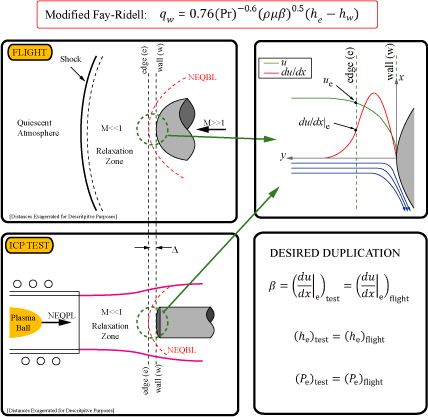Why the need for an ICP type facility? During planetary entry and earth atmosphere re-entry severe aerothermodynamic heating conditions are encountered, especially at the stagnation point of the vehicle. As a vehicle enters an atmosphere at hypersonic speeds a bow shock is created in front of the typically blunt leading edge owing to the fact that subsonic, post shock flow is required to make the sharp turn needed to flow around the vehicle. This produces a significant temperature increase across the shock. Immediately after the shock, the flow’s kinetic energy is transferred to thermal energy in the gas. The extremely high temperatures achieved cause dissociation and ionization of the gas, producing plasma conditions. Thermal protection systems have been developed to shield the vehicle from these harsh plasma conditions but in order to optimize the thermal protection materials used, data must be gathered to characterize the performance of these materials. In flight test are very expensive and diagnostic equipment is hard to implement so a way to simulate the heat loads in a ground test facility is needed.
Currently, two basic types of ground test facilities exist: arc-jets (arc heaters) and Inductively Coupled Plasma (ICP) Torch Facilities. Both are capable of replicating the local trajectory-heating rates for the stagnation point for a wide range of trajectories for different gas mixtures. Presently in the US, the only facilities available with specific aerospace applications for high temperature material testing are large scale arc-jets.
Arc heaters provide high speed temperature flows capable of reproducing temperatures and heat-fluxes associated with re-entry and hypersonic aeroheating. A high voltage source produces an electrical arc which superheats the test gas to the point of ionization. This gas is accumulated in a plenum and expanded in a convergent-divergent nozzle to a supersonic condition. The downside of this facility type is flow contamination from eroded material inside the arc chamber. This makes isolating specific free-stream and surface chemistry analysis difficult.


